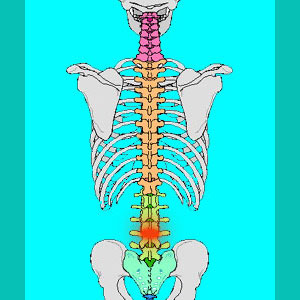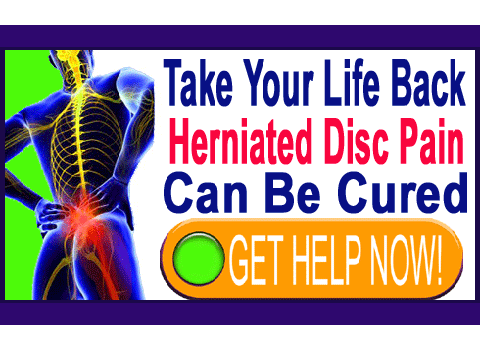
A herniated disc L3-L4 is less common than in the lower lumbar levels, but is still a typical event, often existing in combination with other herniated intervertebral levels at L4/L5 and/or L5/S1. This middle lumbar level takes much punishment as we go about our normal lives and is also a place which can be affected by traumatic occurrences, such as sports injuries and car accidents.
However, medical statistics clearly demonstrate that herniations at L3/L4 are scapegoats for pain far more often than they are the actual underlying source. There is simply no evidence that most herniations are pathological and statistics clearly show that low back pain may exist in just as many people without bulging discs as in people who do demonstrate disc abnormalities.
This treatise explores middle lumbar disc prolapse located at the L3/L4 spinal level.
Where is a Herniated Disc L3-L4 Located?
The L3/L4 intervertebral level is midway down the lumbar spinal region. It is a level in a mostly neural part of the lumbar lordotic curve, making it a bit more resilient to degeneration and injury than the lower levels nearer to the sacrum. L3/L4 herniations are typical, in that they are blamed for enacting pain due to either foraminal stenosis and subsequent L4 nerve impingement or spinal stenosis of the cauda equina structure.
However, the verification process of nerve involvement is often not accurate or complete, often pointing out the fact that it may be impossible for this level herniation to produce many of the symptomatic expressions blamed upon it. It is for this reason that diagnosis and symptomatic correlation should always be sought from a spinal neurologist.
Bulging Disc L3-L4 Presentation
L3/L4 herniated discs often exist in combination with herniations at the lower 2 levels, as well and multi-level degenerative disc disease, which is probably the source of the herniations in most instances. This can present a frightening diagnostic conclusion which can impart an extreme nocebo effect. Little known to most affected patients is that this pattern is extremely common and is usually nothing to be concerned about.
Remember that most herniated discs are not symptomatic. They are merely there and do not hurt anything. This is not to say that structurally-induced pain is impossible, since it is not. It is just diagnosed far more often than it actually occurs, especially by non-neurologists.
Herniated Disc L3-L4 Overview
Degeneration and herniations at L3/L4 are 2 of the great perpetuators of medical mythology as to the source of lower back pain. The constant blaming of the poor maligned spinal discs never seems to get old in the back pain treatment industry, despite overwhelming evidence that most herniated, bulging and ruptured discs do not create any pain; especially not the chronic and treatment-resistant symptoms I see so often in your letters and also reflected in my own personal experiences.
If your symptoms have not resolved despite a number of treatment attempts, I advise you to consider the accuracy of the diagnostic theory, as it may be valid from a structural viewpoint, but incorrect from a symptom-generating one.
Herniated Disc > Herniated Disc Injury > Herniated Disc L3-L4




